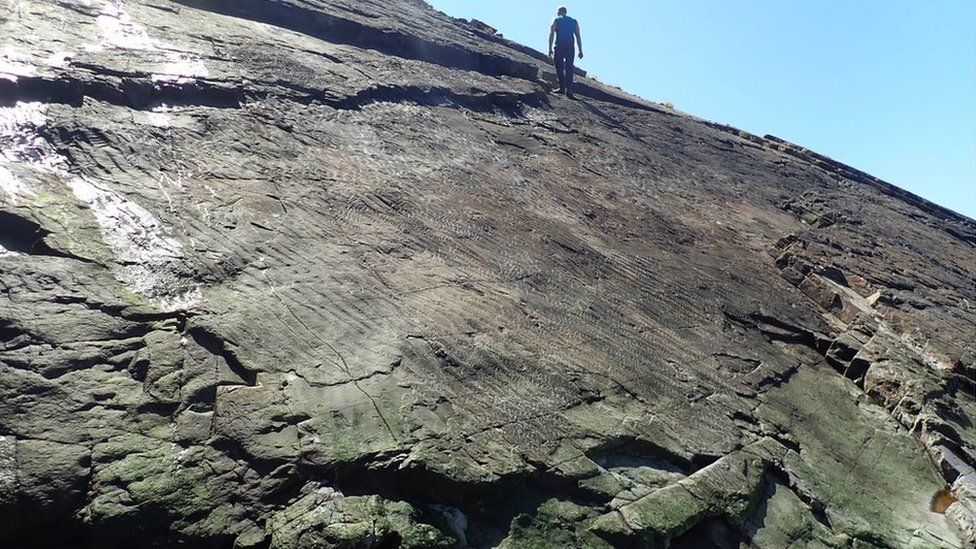
The cliffs where the forest was discovered
By Greg Brosnan
BBC News Climate and Science
Scientists have found what they believe to be the world’s earliest known fossilised forest in cliffs on the coast of South West England.
It was discovered in high sandstone cliffs near Minehead, Somerset, close to a Butlin’s holiday camp.
Researchers from Cambridge and Cardiff Universities say they are the oldest fossilised trees ever found in Britain and the oldest known forest on Earth.
The trees, known as calamophyton, resemble palm trees.
Described as a kind of ‘prototype’ of today’s trees, the largest were between two and four metres tall.
The researchers identified the fossils of plants and their debris as well as fossilised tree logs and traces of roots.
They show how early trees helped shape landscapes and stabilised riverbanks and coastlines hundreds of millions of years ago.
“When I first saw pictures of the tree trunks I immediately knew what they were, based on 30 years of studying this type of tree worldwide,” said co-author Dr Christopher Berry from Cardiff’s School of Earth and Environmental Sciences.
“It was amazing to see them so near to home. But the most revealing insight comes from seeing, for the first time, these trees in the positions where they grew.”
Image source, Chris Berry
Detail of a fallen tree trunk
Dr Paul Kenrick, an expert on plant fossils at the Natural History Museum, who was not involved in the study, said that these clues as to how plants grew together at the time were deeply significant.
The researchers say the fossil forest is about four million years older than the previous record holder in New York State.
It was found in the Hangman Sandstone Formation along the Devon and Somerset coasts and dates back to the Devonian Period, between 419 and 358 million years ago, the time of life’s big expansion onto land. The period is named after Devon because of marine rocks emblematic of the period, which geologists found off the coast.
The researchers say that the area of the find was at the time a semi-arid plain, attached not to England, but to parts of Germany and Belgium, where fossil of such trees have also been found.
Image source, Neil Davies
The cliffs where the forest was discoverd
“This was a pretty weird forest – not like any forest you would see today,” said Prof Neil Davies from Cambridge’s Department of Earth Sciences, the study’s first author.
“There wasn’t any undergrowth to speak of and grass hadn’t yet appeared, but there were lots of twigs dropped by these densely-packed trees, which had a big effect on the landscape.”
Dr Kenrick, from the Natural History Museum said that the trees were very different from any we know today. The most similar modern counterpart might be Dicksonia antarctica, a type of tree fern native to Australasia, but popular in Britain as an ornamental plant.
Image source, Getty Images
Dicksonia antarctica – perhaps the nearest modern-day equivalent to the ancient forest’s trees








